
views
X
Research source
Naming Your Podcast

Brainstorm phrases related to your podcast topic. If you haven't yet come up with potential names that you like, take 10 to 15 minutes to think about your topic and write down words and phrases that are associated with it. Then, go through those words and phrases to attempt to build a creative and unique name. You might also consider a podcast name that includes your own name, particularly if you are an expert on the topic of your podcast or already have a significant following online. Ideally, your title should be brief, memorable, and easy for people to say. Try to come up with several alternatives in case someone else is already using one of them.Tip: If you're truly stuck, try one of the many podcast name generators available online. Provide a few words related to the topic of your podcast and these generators will provide suggested names.

Ask friends (or fans) for suggestions. If you already have fans following you online, they may have ideas for a podcast name. A fan-suggested name also connects you to your fans and signals that you have their interests at heart. Even if you don't already have an online following, you can get your friends or colleagues to weigh in on podcast name ideas. One of your friends might come up with something you hadn't thought of before or inspire a new mental connection for you.Tip: If you have a few names already, you might want to host a poll on social media to find out which name your friends and followers prefer.

Check to make sure the name is unique. Do a simple online search of your chosen name and see what comes up. You can also search on podcast platforms and directories, such as iTunes, to see if there are any existing podcasts with the same or similar name. Keep in mind that none of these searches are perfect or exhaustive. There's still a chance that a podcast with a similar name will slip through the cracks. For example, if you only do a search on iTunes, you might miss a podcast that isn't distributed through iTunes. Search multiple directories and the internet generally to cover as much ground as possible.

Search trademark databases for similar names. Even if you're confident there's not another podcast with the same name as the one you've chosen, you still need to make sure it doesn't infringe on anyone else's trademark. Search online for your country's trademark database. Since podcasts can typically be downloaded globally, you might also want to check databases in other countries. The World Intellectual Property Organization (WIPO) maintains a database that allows you to search the individual databases of more than 100 countries. Go to https://www.wipo.int/madrid/en/search/ to use it. It would be difficult to make sure your podcast name doesn't infringe on any trademark in the entire world. However, you should at least check countries that are geographically close or share the same language. For example, if your podcast is based in the US, you might check the Canadian and British trademark databases.
Registering a Domain
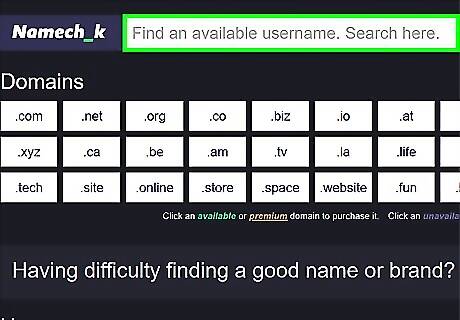
Confirm the domain for your podcast name is available. Go to the website of any domain registrar — you can simply search online for "domain registrar" if you don't already have one in mind. Enter your podcast name in the registrar's search bar to see if you can register the domain. If your podcast name is more than 2 or 3 words, you might also try a shortened version. Ultimately, you want a domain that will be easy to remember and share with others. You probably also want to check for social media account names. While your podcast doesn't necessarily need a presence on every social media platform, having accounts on 2 or 3 will help you spread the word about your podcast. Avoid using hyphens or complicated spellings, which don't look as professional and are easy to forget. Aim for a .com or .org address. Although there are numerous other domain extensions, they don't have the search engine power that a .com or .org address does.Tip: Namechk (https://namechk.com/) is a free service that lets you check both domains and usernames to see what's available for your chosen podcast name.
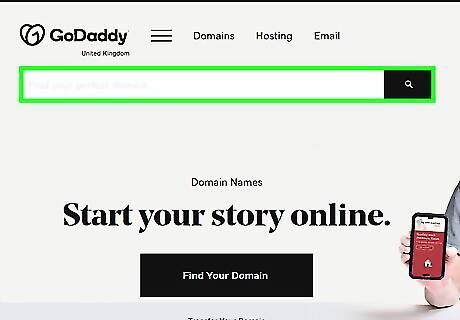
Visit a domain registrar to register your domain. Once you've decided what domain you want, choose a domain registrar to register your domain. While you may get a better deal if you shop around, most registrars have similar prices. Check out the reputation of domain registrars before you make your final selection. While most of them offer basically the same services, some have webpages that are easier to navigate, while others may have stronger customer service. Typically, you'll register your domain for at least a year at a time. Some registrars allow you to register for several years at a time. However, keep in mind that you have no way of knowing if that particular registrar is still going to be in business after 3, 5, or 10 years. You don't know if your podcast is going to be around for that long either.

Arrange for hosting for your website. Choose a web hosting service to host your podcast that is reliable and has fast download speeds so your listeners won't complain about the speed. You also want a service with strong customer support in case you have problems. Some hosting services require you to bring your own domain, while others also offer registrar services. Some popular hosts include DreamHost, Bluehost, and A2 Hosting. You might also try WordPress hosting if you're planning on creating a WordPress site. WordPress is popular with podcasters because it automatically creates an RSS feed, which you'll need to submit your podcast to directories, such as iTunes.
Trademarking Your Content
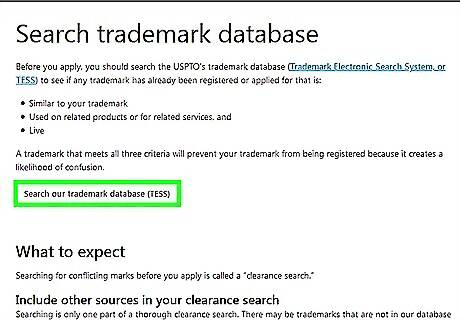
Check the trademark database for similar marks. Before you apply for a trademark, it is your responsibility to make sure that someone else hasn't already registered a mark for a name that is the same or similar. At a minimum, check the trademark database in the country where your podcast will be based. For example, if your podcast is based in the US, go to https://www.uspto.gov/trademarks-application-process/search-trademark-database to search the trademark database of the US Patent & Trademark Office (USPTO). You should also search the international database, maintained by the World Intellectual Property Organization (WIPO), particularly if you're planning on registering your trademark in other countries. Go to https://www.wipo.int/madrid/en/search/ to access the database, which searches more than 36 million trademarks from 40 different databases.
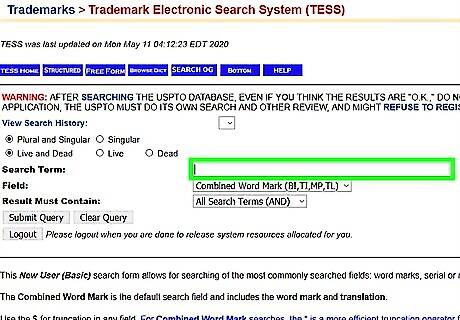
Fill out an application for trademark protection in your country. Typically, you can find trademark applications online. While the application itself isn't extremely complicated, it does require that you know a little about trademark protection. If you're not comfortable with this, you might want to get a lawyer to complete your application for you. If you're filling it out yourself, make sure you correctly identify the trademark class for your podcast name. Trademark classes are based on the Nice system and are used throughout the world. Typically, a podcast name falls under class 9 goods (downloadable MP3 files) or class 41 services (entertainment services, specifically podcast content).Tip: There is no limit to the number of classes you can choose. You might want protection in additional classes if the purpose of your podcast is to sell or promote specific products or services.
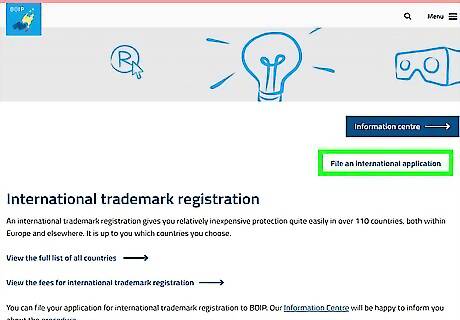
Submit your application to your country's trademark authority. Typically, you can submit your application online. You'll also have to pay an application fee. The amount of the fee is based on the number of trademark classes you've chosen. After you've submitted your application online, you typically can use your online account to monitor the status of your application. However, you probably won't be able to make any changes to your application after you submit it, so make sure it's complete.
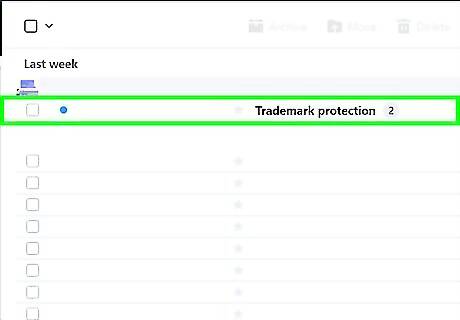
Wait for a decision from the trademark authority. After you submit your application, your trademark claim will be examined by an officer or attorney who works for your country's trademark authority. This examination often takes several months to complete. If the examiner determines that there are significant deficiencies with your application, they will deny it. You'll get a letter stating the reasons for the denial. If only minor corrections are needed to issue your trademark, the examiner may contact you to ask that those changes be made. If your application is approved, your mark will be published. After publication, people have the right to oppose the registration of your mark. If anyone opposes registration, you'll have to defeat their opposition before your trademark will be issued.
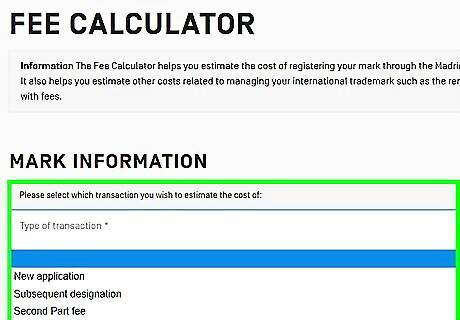
Apply for international trademark protection based on your domestic trademark. If you're successful at getting a trademark registered in your own country, you can use that registration to qualify for registration in any of up to 122 countries that are part of the Madrid System, managed by the WIPO. The Madrid System allows you to apply for trademarks in multiple countries with a single application and payment of a single fee. The fees for international trademark protection under the Madrid System vary depending on where you're from, the number of classes you're seeking protection in, and where you want your trademark covered. To estimate what your fees will be, go to https://www.wipo.int/madrid/en/fees/calculator.jsp and enter the applicable information.


















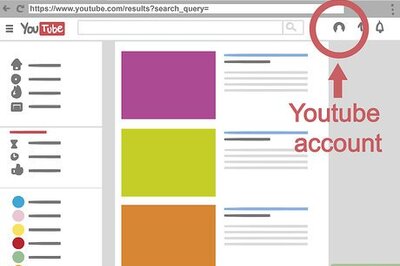

Comments
0 comment